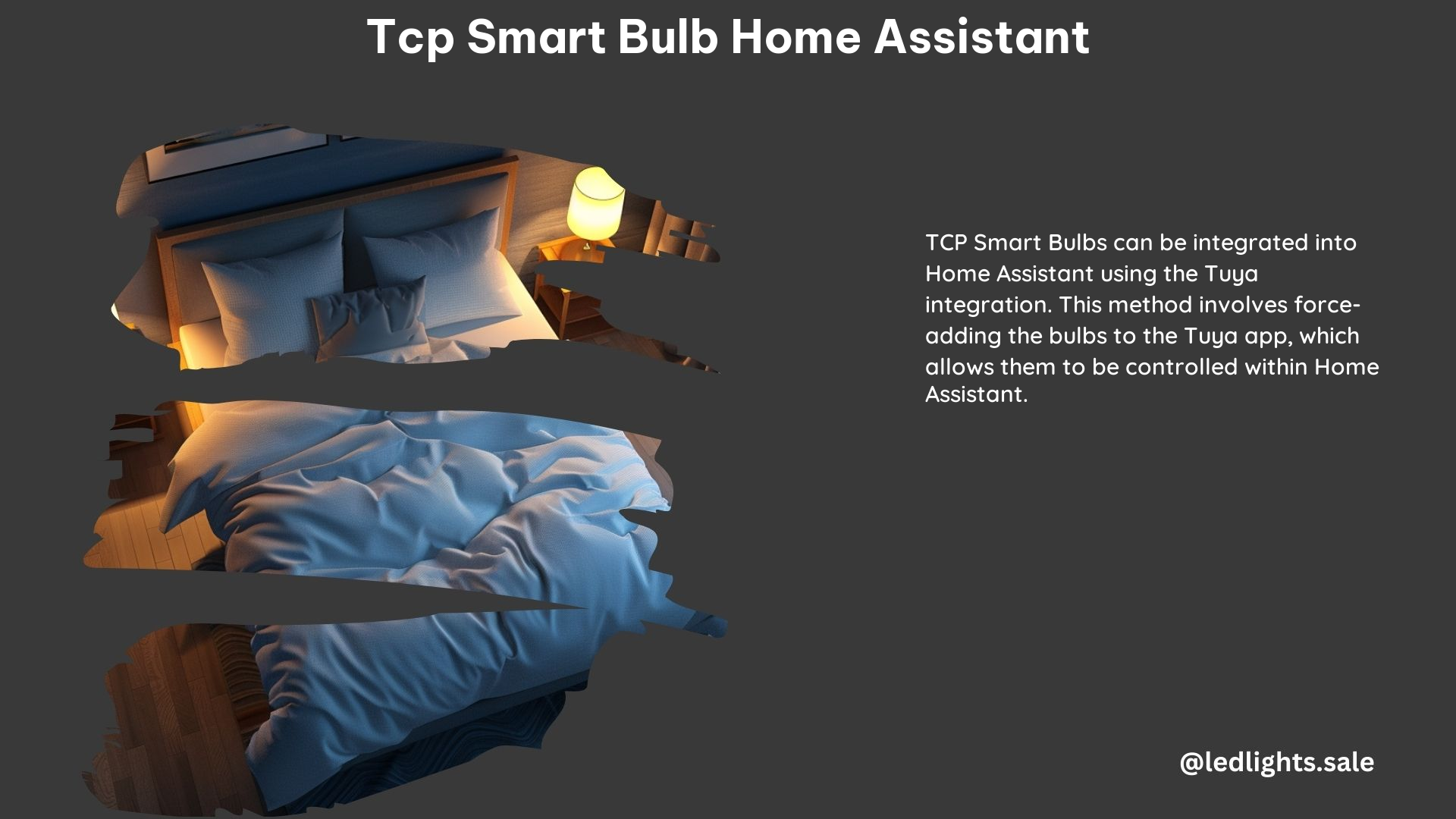Integrating your TCP Smart Bulb with Home Assistant can be a game-changer for your smart home setup. By following this comprehensive guide, you’ll be able to seamlessly connect your TCP Smart Bulb to Home Assistant, allowing you to control it using voice commands, create automated routines, and enjoy a more connected living experience.
Check Compatibility
Before you begin the integration process, it’s crucial to ensure that your TCP Smart Bulb is compatible with Home Assistant. The Tuya integration on the Home Assistant website is your go-to resource for checking the compatibility of your device. This integration is essential, as TCP Smart Bulbs are essentially Tuya devices.
Set up Tuya Integration

To integrate your TCP Smart Bulb with Home Assistant, you’ll need to add the Tuya integration. This integration allows Home Assistant to communicate with Tuya-based devices, including your TCP Smart Bulb. Follow the detailed instructions on the Home Assistant website to set up the Tuya integration correctly.
Utilize Tuya Convert
If your TCP Smart Bulb is not directly supported by the Tuya integration, you can use Tuya Convert to flash the bulb with Tasmota firmware. This process requires a Linux-based device, such as a Raspberry Pi, and involves running the Tuya Convert tool to convert the bulb to Tasmota. You can find the installation instructions for Tuya Convert on the official GitHub repository.
Configure Tasmota
Once your TCP Smart Bulb is running Tasmota firmware, you’ll need to configure it to work seamlessly with Home Assistant. This involves setting up a custom profile for the device. You can find examples of custom profiles online, such as the one provided for the TCP Smart 4-way controllable smart device. These profiles will help you optimize the integration and ensure that your bulb functions correctly within the Home Assistant ecosystem.
Add to Home Assistant
After configuring Tasmota, you can now add the TCP Smart Bulb to Home Assistant using the Tasmota integration. This integration will allow you to control the bulb using voice commands, create automated routines, and integrate it with other smart home devices within the Home Assistant platform.
Troubleshoot Connectivity Issues
If you encounter any issues during the integration process, ensure that your MQTT broker (Mosquitto) is installed and configured correctly. This broker is essential for the communication between your TCP Smart Bulb and Home Assistant. Additionally, you can try force-adding the bulb to the Tuya app to resolve any connectivity problems.
By following these steps, you’ll be able to seamlessly integrate your TCP Smart Bulb with Home Assistant and enjoy the benefits of a more connected and automated smart home.
Technical Specifications and Data Points
To provide a more comprehensive guide, let’s dive into the technical specifications and data points related to TCP Smart Bulbs and their integration with Home Assistant:
TCP Smart Bulb Specifications
- Bulb Type: LED
- Voltage: 100-240V AC
- Power Consumption: 6-10W
- Luminous Flux: 600-800 lumens
- Color Temperature: 2700K-6500K (adjustable)
- Beam Angle: 180 degrees
- Dimmable: Yes
- Wireless Connectivity: Wi-Fi 2.4GHz
- Supported Protocols: Tuya, Tasmota
- Dimensions: Approximately 2.4 inches (60mm) in diameter, 4.3 inches (110mm) in length
Tuya Integration
- Tuya Cloud API: Allows Home Assistant to communicate with Tuya-based devices
- Tuya Device ID: Unique identifier for each TCP Smart Bulb
- Tuya Local Key: Encryption key used for local communication
- Tuya Cloud Key: Encryption key used for cloud communication
Tasmota Firmware
- Tasmota Version: 9.5.0 or later recommended
- Tasmota Commands:
SetOption19 1to enable MQTT discovery - Tasmota Sensors: Temperature, Humidity, Power Consumption
- Tasmota Integrations: Home Assistant, Amazon Alexa, Google Assistant
Home Assistant Integration
- Tasmota Integration: Allows Home Assistant to control Tasmota-based devices
- MQTT Integration: Enables communication between Home Assistant and the TCP Smart Bulb
- Automation and Routines: Create custom automations and routines to control the TCP Smart Bulb
- Voice Control: Integrate with Amazon Alexa or Google Assistant for voice-controlled operation
By understanding these technical details, you’ll be better equipped to troubleshoot any issues and optimize the integration of your TCP Smart Bulb with Home Assistant.
Conclusion
Integrating your TCP Smart Bulb with Home Assistant can unlock a new level of smart home automation and control. By following the steps outlined in this comprehensive guide, you’ll be able to seamlessly connect your bulb, configure it for optimal performance, and enjoy the benefits of a more connected living experience. Remember to refer to the technical specifications and data points provided to ensure a smooth integration process and resolve any potential issues that may arise.
